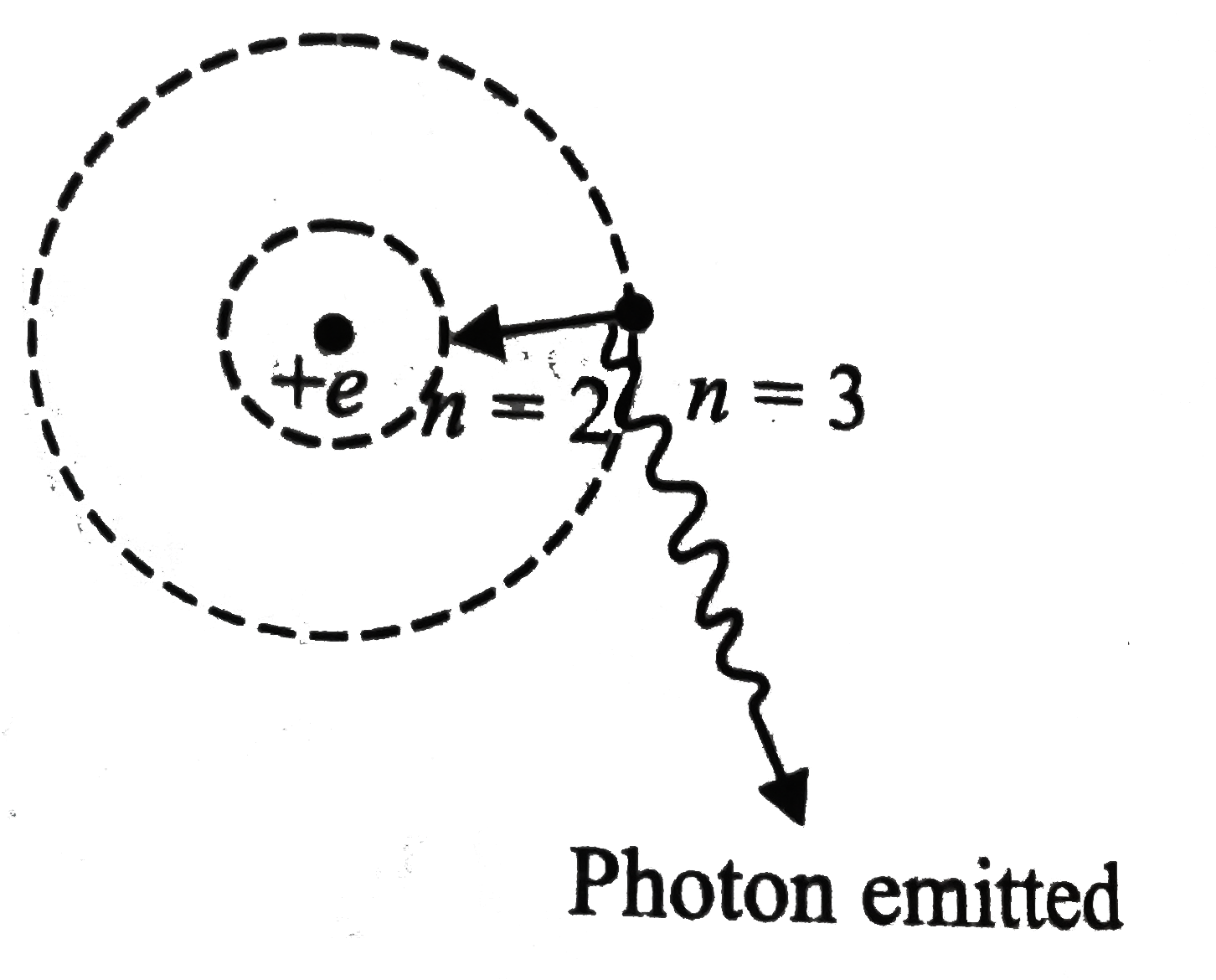An electron revolves round a nucleus of charge Ze. In order to excite the electron from the n=20 to n=3, the energy required is 47.2eV. Z is equal to
3
4
5
2
The correct Answer is:C
To solve the problem of finding the value of Z when an electron is excited from n=2 to n=3 and the energy required is 47.2 eV, we can follow these steps:
Step 1: Write down the formula for energy difference
The energy required to excite an electron from one energy level to another in a hydrogen-like atom is given by the formula:
E=13.6Z2(1n21−1n22)
where:
- E is the energy difference in electron volts (eV),
- Z is the atomic number (number of protons in the nucleus),
- n1 is the initial energy level,
- n2 is the final energy level.
Step 2: Substitute the known values
In this case, we know:
- E=47.2eV
- n1=2
- n2=3
Substituting these values into the formula gives:
47.2=13.6Z2(122−132)
Step 3: Calculate the fractions
Calculate 122 and 132:
122=14=0.25
132=19≈0.1111
Now, calculate the difference:
14−19=0.25−0.1111=9−436=536
Step 4: Substitute back into the equation
Now substitute this back into the energy equation:
47.2=13.6Z2(536)
Step 5: Simplify the equation
Multiply both sides by 365:
Z2=47.2×3613.6×5
Step 6: Calculate the right side
Calculating the right side:
Z2=1699.268≈24.98
Step 7: Take the square root
Taking the square root of both sides gives:
Z≈√25=5
Conclusion
Thus, the value of Z is:
Z=5
Final Answer
The value of Z is 5.
---
The energy required to excite an electron from one energy level to another in a hydrogen-like atom is given by the formula:
E=13.6Z2(1n21−1n22)
where:
- E is the energy difference in electron volts (eV),
- Z is the atomic number (number of protons in the nucleus),
- n1 is the initial energy level,
- n2 is the final energy level.
In this case, we know:
- E=47.2eV
- n1=2
- n2=3
47.2=13.6Z2(122−132)
Calculate 122 and 132:
122=14=0.25
132=19≈0.1111
14−19=0.25−0.1111=9−436=536
Now substitute this back into the energy equation:
47.2=13.6Z2(536)
Multiply both sides by 365:
Z2=47.2×3613.6×5
Calculating the right side:
Z2=1699.268≈24.98
Taking the square root of both sides gives:
Z≈√25=5
Thus, the value of Z is:
Z=5
The value of Z is 5.
Topper's Solved these Questions
- ATOMSBOOK - DC PANDEY ENGLISHCHAPTER - ATOMSEXERCISE - ASSERTION AND REASON
10 Videos
- ATOMSBOOK - DC PANDEY ENGLISHCHAPTER - ATOMSEXERCISE - MATCH THE COLUMNS
4 Videos
- ATOMSBOOK - DC PANDEY ENGLISHCHAPTER - ATOMSEXERCISE - Check point 12.3
15 Videos
- ALTERNATING CURRENTBOOK - DC PANDEY ENGLISHCHAPTER - ALTERNATING CURRENTEXERCISE - JEE MAIN
62 Videos
- CAPACITORSBOOK - DC PANDEY ENGLISHCHAPTER - CAPACITORSEXERCISE - OBJECTIVE_TYPE
1 Video
Similar Questions
A single electron orbits around a stationary nucleus of charge +Ze. It requires 47.2 eV to excite the electron from the 2nd to 3rd Bohr orbit. Find atomic number 'Z' of atom .
View SolutionAn electron revolves round a nucleus of atomic number Z. if 32.4 eV of energy is required to excite an electron from the n=3 state to n=4 state, then the value of Z is
View SolutionA single electron orbits around a stationary nucleus of charge +Ze, where Z is a constant and e is the electronic charge. It requires 47.2eV to excited the electron from the second Bohr orbit to the third Bohr orbit. Find (i) the value of Z, (ii) the energy required to excite the electron from the third to the fourth Bohr orbit and (iii) the wavelength of the electromagnetic radiation radiation to remove the electron from the first Bohr orbit to infinity.
View SolutionThe energy ( in eV ) required to excite an electron from n = 2 to n = 4 state in hydrogen atom is
View SolutionA single electron orbit around a stationary nucleus of charge +Ze where Z is a constant and e is the magnitude of the electronic charge. It requires47.2eV to excite the electron from the second bohr orbit to the third bohr orbit. Find
(i) The value of Z
(ii) The energy required by nucleus to excite the electron from the third to the fourth bohr orbit
(iii) The wavelength of the electronmagnetic radiation required to remove the electron from the first bohr orbit to inlinity
(iv) The energy potential energy potential energy and the angular momentum of the electron in the first bohr orbit
(v) The radius of the first bohr orbit (The ionization energy of hydrogen atom =13.6eV bohr radius =5.3×10−11matre velocity of light =3×108m/sec planks 's constant =6.6×10−34 jules - sec )
View SolutionA single electron orbits a stationary nucleus of charge +Ze, where Z is a constant and e is the magnitude of electronic charge . It requires 47.2eV to excite electron from second Bohr orbit to third Bhor orbit . Find
a the value of Z
b the energy required to excite the electron from the third to the fourth Bohr orbit.
c. the wavelength of electromagnetic rediation required to remove the electron from the first Bohr orbit to infinity.
d Find the KE,PE, and angular momentum of electron in the first Bohr orbit.
e. the redius of the first Bohr orbit
[The ionization energy of hydrogen atom =13.6eV Bohr radius =5.3×10_11m, "velocity of light" =3×10−8jms−1, Planck's constant =6.6×10−34j−s]
View SolutionIn excited H atom when electron drop from n=4,5,6 to n=1, there is emission of
View SolutionA single electron orbits around a stationary nucless of charge +Ze where Z is a constant and e is the magnitude of electronic charge ,if respuires 47.2 e

is excite the electron from the second bohr orbit to the third bohr orbit
a. Find the value of Z
View SolutionIn excited H atom, when electron drop from n=4,5,6 to n=1, there is emission of
View SolutionIn excited H atom, when electron drop from n = 4, 5, 6 to n = 1, there is emission of:
View Solution